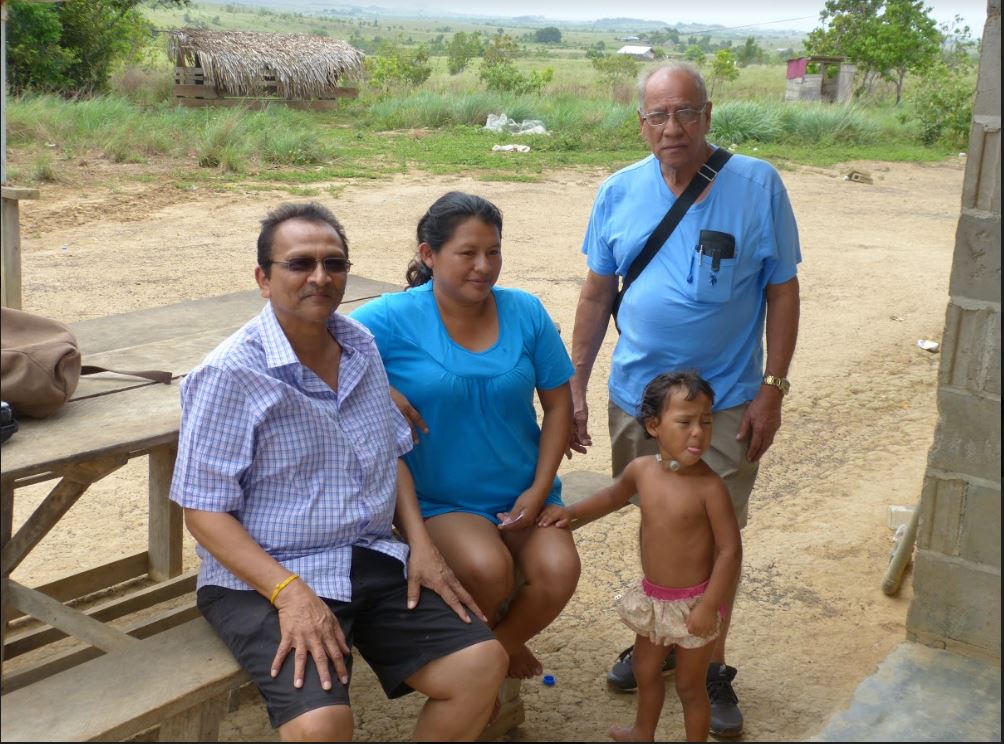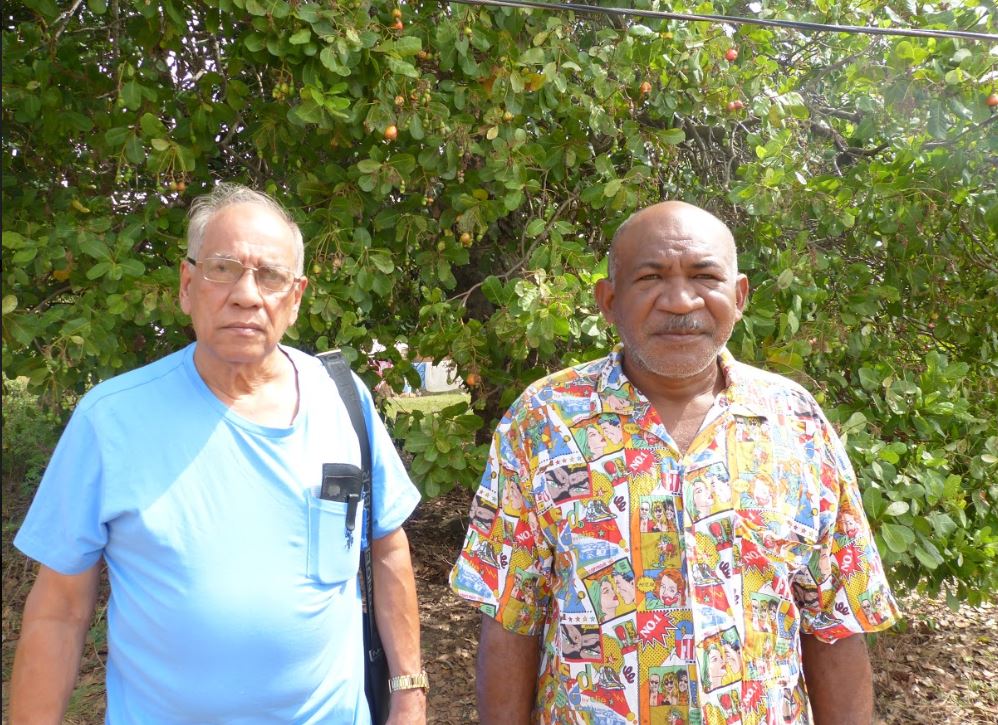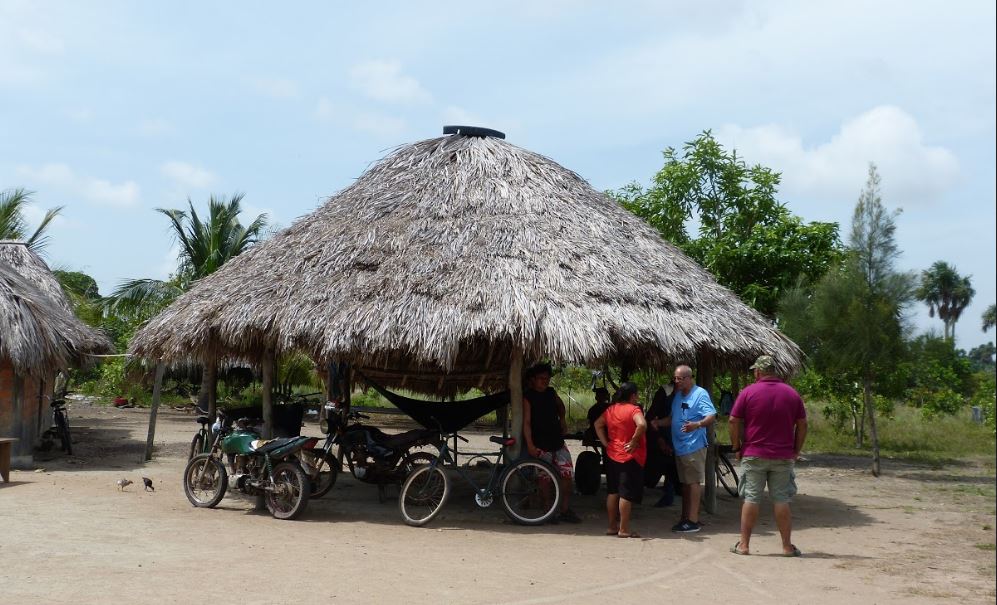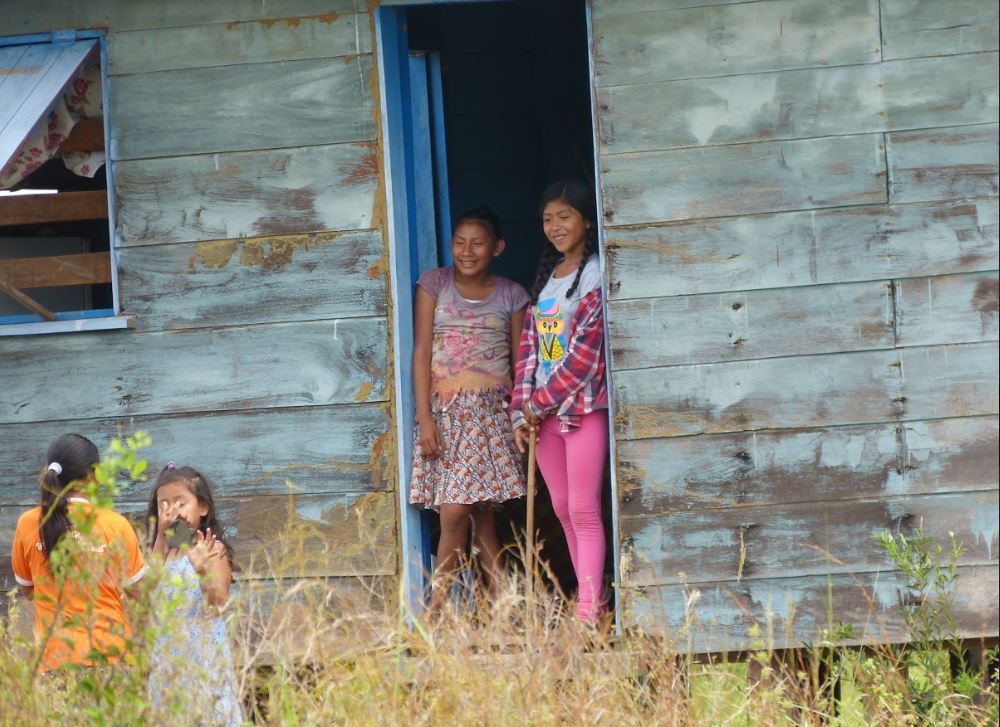
Politics and the Amerindians of Guyana (Part 1 of 3)
By Dr Kumar Mahabir and Jai Sears
The Rupununi Savannah in Guyana is 5,000 square miles of immense rolling plains interspersed with vast wetlands and dense forests. Trinidad and Tobago, at just 1,900 square miles, can fit into the Savannah more than two times. With its numerous ranches and horses, the Savannah is the perfect setting to shoot a Western cowboy movie.
The Rupununi is just one example of how Guyana has been blessed with expansive lands and other rich, natural resources. It is located in the south-western part of Guyana, bordering the Brazilian Amazon, and is the home of the Makushi, Wai-Wai and Wapishana Amerindian tribes who have inhabited the region for thousands of years. These native peoples legitimately believe that all the lands in the Rupununi should be returned to them, who in turn, would redistribute some to the State and others.

My friend, Jai Sears, and I took the one-hour flight from Ogle airport to Lethem (300 miles away) to spend a week for vacation and research last Christmas. Lethem is the largest town and main commercial centre in the Rupununi Savannah which has a population of about 3,000 persons. It is the capital of Region 9 and the hub linking many of the surrounding Amerindian villages. Lethem is also a raffish, hot, dusty border town that is the gateway to Brazil across the Takutu River to Bonfim and Boa Vista which we also visited.
Immigrant Chinese merchants
The sleepy Lethem town awakens once a year for the Rupununi Rodeo held on the Easter weekend. The competition among various ranches in the region attracts visitors from Guyana, Brazil, Venezuela and the rest of the world. It is one of the largest events in Guyana.
Lethem was once known as a place for the profitable business of milking poisonous venom from the deadly Bush Master and labaria/labarria snakes to make medicine. The Savannah was also once abundant with cultivated rice as well as cattle and fish. The few mountains, slopes and valleys were abundant with cassava, corn, bora [bodi], banana, watermelons, lettuce, ochro, coconut and boulanger [baigan/eggplant]. There is not much farming now.
Jai and I stayed at the 3-star Rupununi Eco Hotel in Lethem. The town should now be named Chinathem because Asian migrants have taken over almost all the commerce from the East Indians, building massive stores like warehouses in which they live downstairs at the back end. If the Chinese are to employ anyone at all as store clerks, it is young Amerindian girls who the chiefs believe are being exploited. Their main clients are neighbouring Brazilians who cross the nearby Takutu river-border who come to shop for the day, particularly on Saturdays.
Since the retail trade is not so profitable again, Chinese entrepreneurs are investing in the gold and lumber industries. They said that the former Bharrat Jagdeo-led People’s Progressive Party Civic (PPP/C) government was more responsive to new business ideas such as the introduction of casinos. The Chinese merchants said that since the Partnership for National Unity + Alliance For Change (APNU+AFC) coalition government came to power, business has slowed down to a crawl. They are most likely to vote for the PPP/C party in the March 2nd 2020 general elections.

Most Amerindians are Catholics
From the hotel, we travelled every day by hired 4×4 vehicles to visit Amerindian tribes in Kumu, Nappi, Hiawa, Moco Moco and St. Ignatius Mission. We drove through meandering and undulating rough, red, laterite roads in the Savannahs, sometimes travelling about 80 miles to reach a village. We interviewed members of the Mukashi tribe who live in brick, wooden and galvanized- or thatched-covered houses. Every household has an outdoor latrine. Children were seen playing football and volleyball.
The aborigines have been converted to become Roman Catholics, Adventists and Evangelists but still maintain their native rituals and beliefs in syncretic and covert forms. The villagers are quiet and friendly, and there is no fear by strangers of robbery or violence.
We spoke to youths, women, councillors, officials, medicine men, ruler constables and
toshaos [chiefs] about the condition of their lives, and for who and how they would vote in the March 2nd 2020 general elections. The aboriginal population of all of Guyana is estimated to be about 79,000 persons (10.5%) of the total population of 747,000, according to the 2012 census. Settlements such as Kumu has 400 inhabitants living in 64 households with residential clusters like Central 1, Central 2, Kuru Kuru, Palm Grove, Crapo Pond, Tiger Plate, Cuba, Berbice, Kamana and Caracas.

Politics and the Amerindians of Guyana (Part 2 of 3)
By Dr Kumar Mahabir and Jai Sears
Traditionally, Amerindians in Guyana have voted for the Bharrat Jagdeo-led People’s Progressive Party Civic (PPP/C) party, now in Opposition. In Region 9 where they constitute the majority of the electorates, most Amerindians voted for the PPP/C instead of the now-governing Partnership for National Unity + Alliance For Change (APNU+AFC) coalition party (5,794 vs 3,592) in the May 2015 general elections. In the UK Telegraph (Feb 9, 2020), journalist Mat Youkee wrote: “With the main parties equally matched, the votes of the country’s Amerindian minority could be crucial for victory in the upcoming election.”
This election is the most critical in Guyana’s history as the country is preparing for unprecedented wealth with ExxonMobil’s recent discovery of billions of barrels of oil offshore. The stakes are high. Experts predict that this lone English-speaking country in South America is set to grow by 86 percent this year to become the fastest growing economy in the world.
Jai Sears and I visited St Ignatius Mission twice because it was close to our hotel. It is the largest of the Amerindian villages in the Rupununi Savannah. It has a Catholic nursery, primary and secondary school. Books and hot meals are given free to all children up to the primary level. The teachers are mainly Amerindians who stay in quarters built for them.
There is also a community centre (benab), a multi-purpose building, a village office, a presbytery training centre (run by Jesuit priests), a sport pavilion, and a Roman Catholic church and Presbytery residence (where priests live). St Ignatius Mission has a population of 1800 individuals living in about 450 households. Mainly women out-marry coast-landers.

Solar panels with free Wifi
Amerindians in St. Ignatius and elsewhere are out of work except for traditional jobs in agriculture, hunting and fishing. Under the David Granger APNU+AFC government, the budding cashew processing plant has ground to a virtual standstill. The villagers complained that there are few Government jobs for high school graduates in the village which result in many of them “doing mischief” in their abundant, idle time.
There are no land-line telephones in most aboriginal villages, but in Nappi and other settlements, Jagdeo had installed solar panels with free Wifi in the thatched-roofed community centres. This communication facility helped children tremendously with their homework and school projects. The solar panel, however, does not generate enough electricity to power a TV or refrigerator.
The hand-dug water wells are few and inadequate. During the election campaign in 2015, Granger had promised the villagers bigger panels. When he won, he removed the panels and replaced them with nothing, just as he had scrapped the student grants for Amerindian children. The villagers said the Granger APNU+AFC government has neither provided more water wells nor sustainable jobs for youths nor regular support for indigenous children to attend school.
Villagers said that the government looks only after the welfare of its own supporters unlike the former PPP/C government that served the entire Amerindian community. The Minister of Indigenous Peoples’ Affairs, Sydney Allicock, is reported to have neglected all other Amerindian communities except the district where he lives. Amerindians believe that a Government should serve all sections of a society equally.
Bumpy, destructive, red roads
The natives of Nappi of the Makushi and Wapishanas tribes said they feel neglected. Nappi has over 700 residents living in 120 households, excluding the neighbouring satellite villages of Parishara and Hiawa. It has a Catholic church and a Church of Christ. It also has a nursery school, a primary school, a hot meal kitchen, a teacher’s house, a health centre, a community centre (benab), a village office, a women’s activity centre, a sports complex and a village library. But none of these social and educational institutions are being served adequately by the present Government’s Presidential Grant. To the credit of Granger, his APNU+AFC government has recently made available pipe-borne water to the settlement, perhaps as a sweetener for the up-coming elections.
The Amerindians have claimed that the APNU+AFC Government contracts have been given mainly to party’s supporters and financiers as well as friends and family who were often unqualified and incompetent. The good asphalt roads, as well as the schools and health centres, were built by the PPP/C government led by Jagdeo. Some roads and buildings that were being rebuilt by Jagdeo have been left unfinished (“half-way”) when the Granger Government came to power in 2015.
The roads leading to the Amerindian villages are not paved with asphalt and are covered with brick-coloured laterite. It is bumpy and destructive to cars with red dust spreading all over, inside and out, especially on the rims and tyres. Only 4×4 vehicles are recommended. Some commercial distribution trucks do not schedule this route and destination because of the bad condition of the roads.
Politics and the Amerindians of Guyana (Part 3 of 3)
By Dr Kumar Mahabir and Jai Sears
When rain falls, the laterite roads to the Amerindian settlements in the Rupununi Savannah in Guyana run in a mess and get flooded in places. Some parts become impassable. In the circumstances, bicycles and motorbikes are common for men and women commuters. No significant road repairs have been done since the David Granger-led Partnership for National Unity + Alliance For Change (APNU+AFC) coalition Government won the elections in 2015. The laterite roads have not been maintained and have gone bad. Foxes, deer, iguanas and snakes can be seen crossing the tracks and trails.
The Amerindian spokesmen said that the former Bharrat Jagdeo-led People’s Progressive Party Civic (PPP/C) Government had shared State resources to all stakeholders without discrimination or party loyalty. A female spokesperson in Kuru said: “The previous government was most helpful. That Government did not look mainly at Georgetown, the city; they focused all over. The reached all over, even to the poorest. They gave us transportation, tractors, electricity, solar lights in every home … at least nuh, we appreciate that.”
The villagers claimed that under the former PPP/C Government, they were given tractors (with regular supplies of fuel) to cultivate their lands, and buses to transport children to school. Although education is free, many children in Kuru and elsewhere cannot write the high school exams (CXC) because they have to pay exam fees which they cannot afford. They need subsidised houses and a home for the aged. Under Granger, these benefits and resources, like the Community Support Office (CSO), have dwindled and even ceased.
Fence needed to protect the buildings
One Amerindian leader said, “It was sad when the PPP/C lost the elections in 2015. It was sad for the young people. They came to me a few years later and said, “Aunty, with the previous government, we had a lot of money to go shopping. The youths from various clusters came together to organise community events. … With no Government assistance, the youths have left for Georgetown [the capital] and Brazil for jobs. But they would return one day. As the old people say, when the grey hairs begin to show, it is a reminder to go back home. It will be like that.”
In the Amerindian village of Nappi, the Amerindian informants said that the Granger Government has accused the Jagdeo government of leaving the treasury bankrupt. If that were so, how come the Partnership for National Unity + Alliance For Change (APNU+AFC) coalition Government has given its Cabinet Ministers a 50 percent increase in salary? What did Granger do with the money that Jagdeo had left?, they asked.
Granger has wasted millions of taxpayers’ dollars in the High Court, the Court of Appeal and the Caribbean Court of Justice (CCJ) in appealing the no-confidence motion (NCM) which APNU+AFC has lost in Parliament in December 2018. They also said that Granger misused taxpayers’ money by illegally revising the voters’ registration list which was unnecessary.
The villagers of Nappi said they need money to build a fence around the public buildings against marauding cows and sheep as well as reckless motor-bikers. The leader said that most of Nappi residents have been seen wearing the symbolic red T-shirts in support of the PPP/C party. “They say that red is better than the green” [the symbol of APNU+AFC party].
No oil pipe dreams
The indigenous leaders said that the APNU+AFC coalition is both an illegal and illegitimate Government in power because it refused to demit office and call fresh elections since December 2018. It has also illegally and unilaterally appointed a Chairman of the Guyana Elections Commission (GECOM). They believe that the March 2nd 2020 general elections in Guyana will not be free and fair under Granger. There are questions about the credibility of the names on the voters’ registration list.
The indigenous people do not live in hope that the discovery of oil in Guyana would bring them a better life. They said that the Granger Government has already given away the oil for a pittance of two percent (2%) royalty from Exxon and 1% from Tullow. In the rest of the world, the royalty rate was generally about 12.5%, but it has recently increased between 18% and 25%. They have heard that Exxon is a capitalistic, corrupt conglomerate that is expected to drain the economy and suck Guyana’s natural resources dry. They suspect that ExxonMobil will help Granger rig the December 2nd elections.
Dr Kumar Mahabir is an anthropologist from Trinidad & Jai Sears is a company director from Grenada.
Correspondence – Dr. Kumar Mahabir, Trinidad and Tobago, Caribbean.
WhatsApp (868) 756-4961 E-mail: dmahabir@gmail.com
Amerindians are stereotyped as being lazy who make many children to thrive on Government child grants.
Source: World Hindu News





